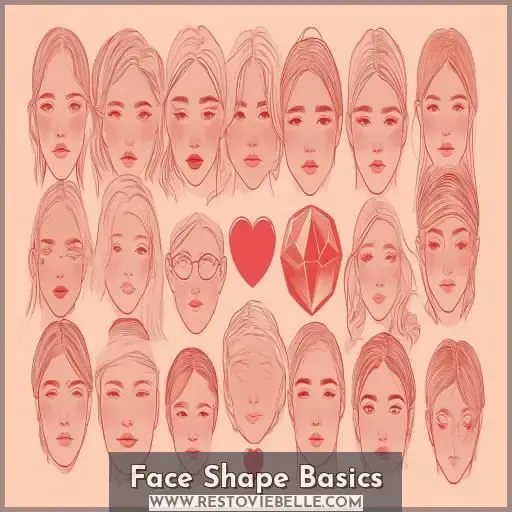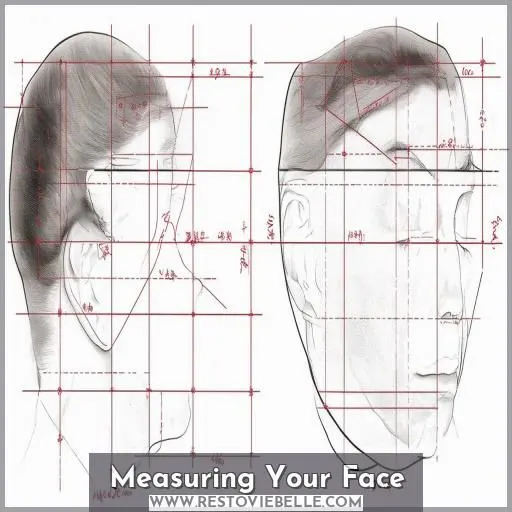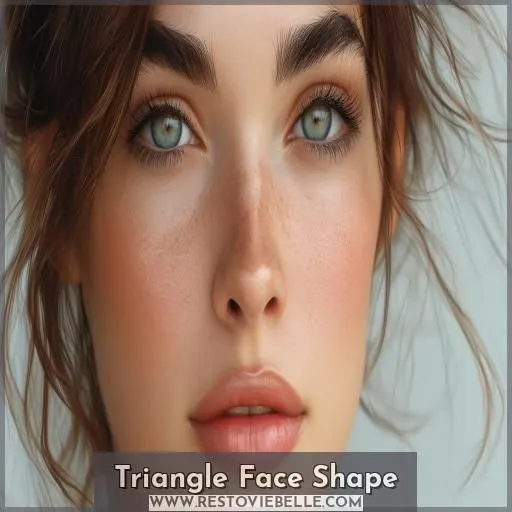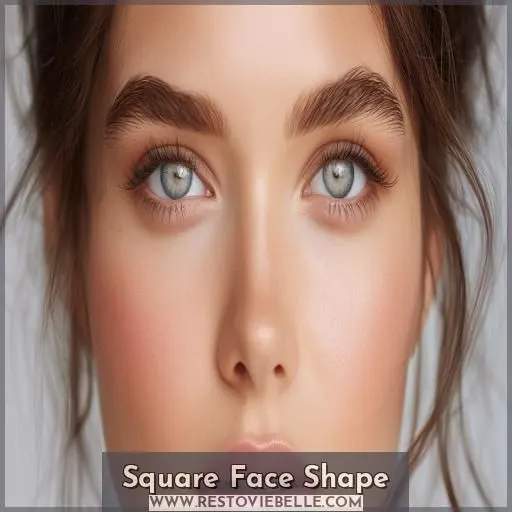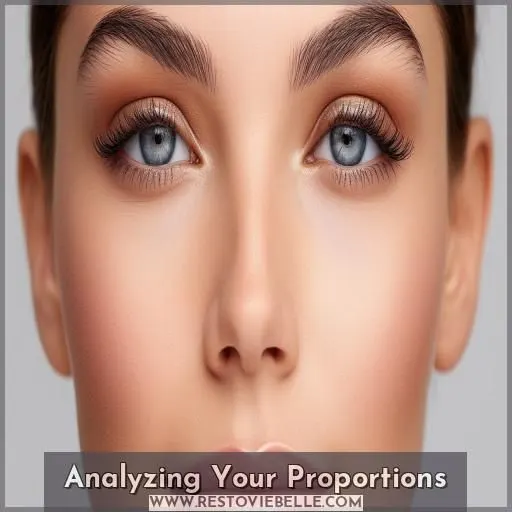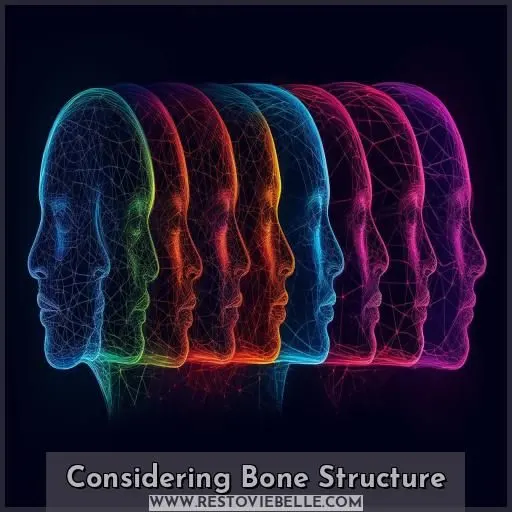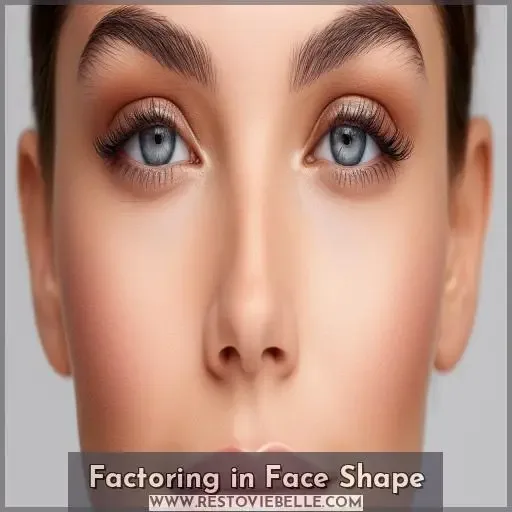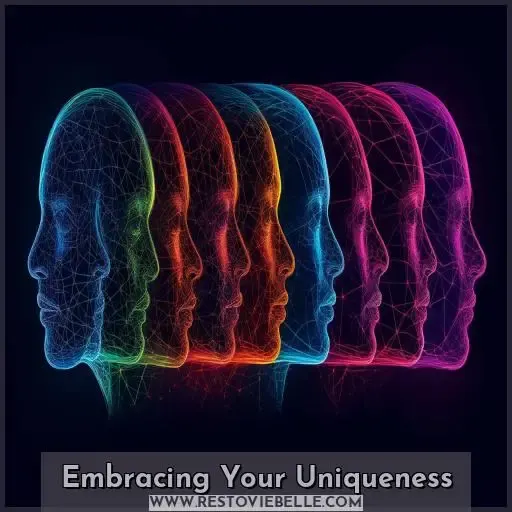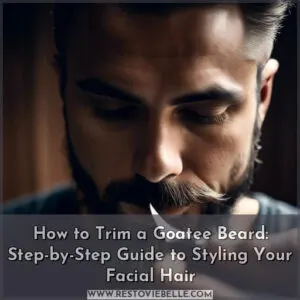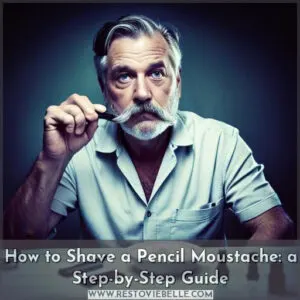This site is supported by our readers. We may earn a commission, at no cost to you, if you purchase through links.
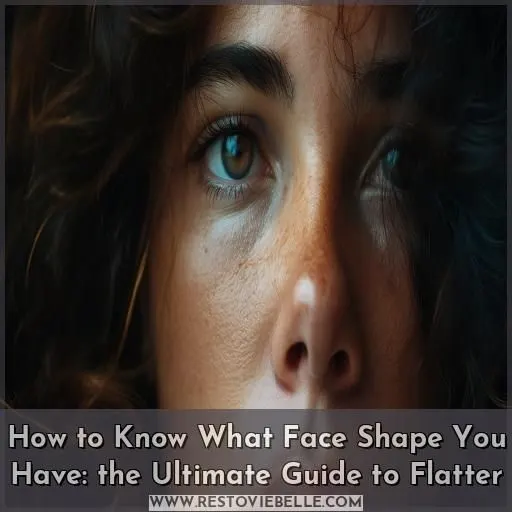 To know what face shape you have, grab a mirror and ruler. First, measure the length from hairline to chin, then the width across your forehead, cheekbones, and jawline.
To know what face shape you have, grab a mirror and ruler. First, measure the length from hairline to chin, then the width across your forehead, cheekbones, and jawline.
If your cheekbones are the widest part, with a narrow jawline, you’ve got a triangle shape. Roughly equal length and width? Hello, round face! An angular, defined jawline and broad forehead signals a square shape.
Nail down those key ratios and bone structure – it’s as unique as your fingerprint. Once you identify your face’s silhouette, you’ll reveal tips for enhancing its natural beauty.
Want to learn how to accentuate your best assets?
Table Of Contents
Key Takeaways
- Face shapes are as unique as fingerprints, so embrace your distinct bone structure and features! It’s all about enhancing your natural beauty.
- Get out that ruler and mirror – measuring your face’s key proportions is the key to unlocking your true shape. Don’t let aging or facial hair obscure your silhouette!
- Once you’ve nailed down your face shape, you unlock a world of possibilities for flattering hairstyles, makeup techniques, and accessorizing tips to highlight your best assets.
- Beauty shines from within, but a little creativity and know-how can help you radiate confidence from every angle. Focus on accentuating your standout features and downplaying areas you’re not as confident about – the right tips and tricks can work wonders!
How to Know What Face Shape You Have?
To know what face shape you have, measure the proportions of your face, analyzing the width of your forehead, cheekbones, and jawline. Compare these measurements to common face shapes like oval, round, square, or heart-shaped.
Face Shape Basics
Understanding your face shape is essential for enhancing your features and achieving a flattering look. Your face shape is as unique as your fingerprint, determined by your bone structure and facial proportions.
It influences everything from hairstyles and makeup techniques to accessorizing tips. Identifying your face shape empowers you to accentuate your best assets and create a balanced, harmonious appearance.
Don’t let aging or facial hair obscure your true shape – learn to embrace your distinct bone structure. With a little knowledge and creativity, you can highlight your most striking features and radiate confidence.
Mastering the basics of face shapes opens up a world of possibilities for self-expression and personal style.
Measuring Your Face
To determine your face shape, measure the length from your hairline to chin, the width across your forehead from hairline to hairline, the width at your prominent cheekbones, and the width of your jawline from ear to chin multiplied by two. These key measurements will give you the proportions needed to accurately identify your unique facial structure.
Face Length
To measure face length, from the hairline to chin, get a tape measure. 1) Stand facing a mirror. 2) Align measure vertically along your profile. 3) Note the length.
Forehead Width
Next, measure your forehead width—the horizontal distance between your hairlines. A wide forehead signifies heart, diamond, or triangle face shapes, while a narrow one points to an oval.
Cheekbone Width
Measuring your cheekbone width requires:
- Identify the highest points
- Use a ruler or app
- Note the distance
The prominence, size, and shape influence face structure, influencing makeup, sunglasses, and overall appearance.
Jawline Width
To measure your jawline width, start at one ear, trace your finger along your defined jawline, and end at the opposite ear’s corresponding point. This width, doubled, equals your jawline width.
Triangle Face Shape
You likely have a triangle face shape if your cheekbones are the widest part of your face, creating an angle that narrows considerably toward your jawline and chin. The high, prominent cheekbones paired with a slim, refined jawline create a triangular outline—one of the most striking and coveted facial structures.
High Cheekbones
High, prominent cheekbones creating an angled cheek contour characterize the triangle face shape. This cheekbone prominence often pairs with sculpted, defined cheekbone shapes. When highlighting or contouring, accentuate the natural cheekbone shape with blush or highlight focusing on the cheekbone’s high point.
Narrow Jaw
To define a narrow jaw, it typically extends below your cheekbones and appears slim. Your chin may appear pointed or rounded while remaining narrow overall, forming an angular or heart-like jawline. Meanwhile, those prominent cheekbones create contrast, highlighting your refined jawline’s delicate structure.
Round Face Shape
If you have a round face shape, your features are characterized by a rounded hairline and jawline, with your face width and length measurements being roughly equal. You’ll also likely have full, rosy cheeks that give your face a youthful, cherubic appearance.
Rounded Features
You have a round face shape if your soft chin, full cheeks, wide nostrils, round forehead, and arched eyebrows create an overall circular appearance.
Equal Measurements
With a round face shape, your face length equals your width measurements. Your hairline could be rounded, with softened facial angles and a gentle, full jawline width, reflecting face fullness uniformity.
Full Cheeks
You also have full, chubby cheeks that lack defined cheekbones. This sweet, dimpled look gives your face a youthful, cherubic appearance. While prominent cheekbones may look striking, your round cheeks contribute an endearing softness to your face shape.
Square Face Shape
A square face shape is characterized by an angular, well-defined jawline and a broad, prominent forehead that creates a squared appearance. Your chiseled cheekbones bring attention to the strong bone structure and distinct angles that define this striking face shape.
Angular Jawline
You have a square face shape with an angular jawline. Your jaw shape has strong definition and a soft corner-to-corner line. This gives your chin a square, prominent look.
Pronounced Forehead
For a square face, you’ll notice a pronounced forehead. Key signs:
- Angular hairline
- Wide brow ridge
- Receding temples
- Forehead prominence
Your forehead’s width matches your jawline’s angular shape.
Defined Cheekbones
Your defined cheekbones add sharpness and structure. Highlight them with strategic contouring or consider cheekbone implants for extra projection. However, asymmetry or overly prominent cheekbones may call for reduction procedures. Analyze your proportions to achieve facial harmony.
Oval Face Shape
An oval face shape boasts balanced proportions, with a rounded jawline and a forehead that appears slightly narrower than the cheekbones. You’ll recognize this versatile face shape by its longer length compared to width and its flattering, symmetrical curves.
Balanced Proportions
You have a balanced, oval face shape with balanced proportions. Your forehead is narrower than your cheekbones, yet your face’s overall length exceeds its width, creating facial harmony.
Rounded Jawline
Your jawline’s rounded curves are a telltale sign:
- Softened angle at chin
- Lack of harsh lines
- Gentle contours
- Balanced proportions
Consider jawline contouring, makeup, exercises, or fillers to enhance this flattering shape.
Forehead Narrower
And if your forehead appears narrower than your cheekbones, that’s another oval telltale. With an oval shape, your face length exceeds the width, giving balanced proportions. Check if your rounded jawline and chin complement this slender, elongated look.
Analyzing Your Proportions
To analyze your proportions, start by comparing your measurements. Are your face length and width nearly equal, indicating a round shape? Or is your jawline wider than your forehead, suggesting a square shape?
Next, assess your cheekbone prominence relative to your jaw, note the angle of your jawline, and examine the width of your nose and chin protrusion. These nuances, combined with your overall measurements, will paint a clearer picture of your unique face shape.
Considering Bone Structure
To accurately pinpoint your face shape, examine the angle and protrusion of your chin line—is it rounded, pointed, or squared off? Additionally, observe the prominence of your cheekbones and the ratio between your forehead and jawline widths, as these structural elements play a significant role in defining the overall contours of your visage.
Chin Line Shape
Your chin’s shape reveals key bone structure clues. Observe its length, prominence, width, sharpness, and roundness:
| Chin Feature | Description | Face Shape Hint |
|---|---|---|
| Length | Short to long | Round vs Oval |
| Prominence | Recessed to protruding | Square vs Heart |
| Width | Narrow to wide | Triangular vs Square |
| Sharpness | Pointed to rounded | Angular vs Curved |
| Roundness | Flat to bulbous | Chiseled vs Soft |
Cheekbone Prominence
Your cheekbone prominence adds striking angles yet softness. Prominent, defined cheekbones convey a more angular face shape. More subtle cheekbone structure suggests rounder qualities. Notice the shape, angles, and definition of your cheekbones carefully.
Forehead-Jaw Ratio
Another significant factor is your forehead-jaw ratio:
- Compare widths: is your forehead narrower than jaw?
- Are they balanced with similar dimensions?
- Or is your forehead strikingly wider?
- This informs flattering hairstyles, sculpting techniques, suitable eyewear, and makeup application to highlight your facial contours.
Factoring in Face Shape
Once you’ve analyzed your proportions and bone structure, it’s time to factor in your overall face shape. The roundness of your jaw shape, prominence of your cheekbones, and angle of your hairline all contribute to the overall impression.
Study photos and assess symmetry – do you see a narrowing at the chin or widening at the cheeks? Faces rarely fit neatly into categories, so embrace the nuances that make you unique.
Embracing Your Uniqueness
- Opt for flattering haircuts that enhance your features.
- Create face shape illusions with strategic makeup and eyebrow shaping.
- Develop a skin care routine that brings out your natural glow.
Don’t get caught up in unrealistic standards or trends that don’t suit you. Focus on accentuating your best assets and downplaying areas you’re not as confident about. With the right tips and techniques, you can highlight your standout facial features and exude confidence from every angle. Beauty shines from within, so own your uniqueness!
Frequently Asked Questions (FAQs)
What face shape flatters a receding hairline?
With a receding hairline, an oval face shape flatters best. Its balanced proportions and rounded jawline create a soft, youthful appearance that minimizes the appearance of a receding hairline.
Do face shapes change with weight fluctuations?
Like shifting sands, our faces adapt and change with weight fluctuations. Cheeks may appear fuller or more defined, jawlines sharper or softer – but the underlying bone structure remains our unique facial blueprint.
Can makeup enhance or downplay facial features?
Makeup artistry can sculpt features, enhancing or softening angles through strategic contouring, highlighting, and shading. With skilled technique, you can create desirable illusions to flatter your natural beauty.
How does aging affect perceived face shape?
As you age, your face naturally loses fat and elasticity. This causes a more pronounced jawline, hollower cheeks, and less full features, potentially altering your perceived face shape over time.
Are certain hairstyles better for specific face shapes?
Yes, certain hairstyles complement specific face shapes. Angular cuts like bobs suit square faces, while softly layered styles flatter round faces. For oval faces, most styles work well. Heart-shaped faces look radiant with side-swept bangs or face-framing layers.
Conclusion
Discovering how to know what face shape you have demystifies flattering makeup and hairstyle choices. Prudently applying these pointers personalizes your look, accentuating assets and camouflaging concerns. Confidently celebrating your alluring contours cultivates charismatic presence – the ultimate accessory. Embrace your extraordinary essence; you’re uniquely, undeniably, unforgettably you.

